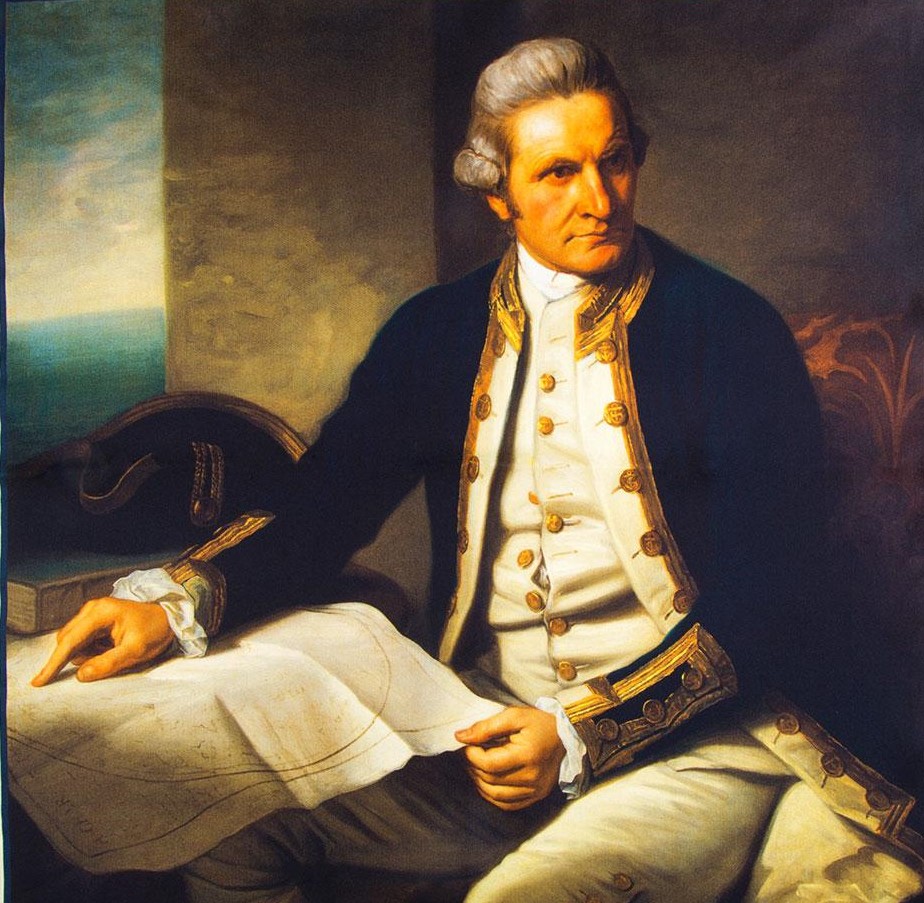
Although most famous for his earlier voyage and the ‘discovery’ of Australia, Captain James Cook’s second voyage would travel further south than anyone before him. Given two ships, Resolution and Adventure, he and his crew set sail for the Antarctic in July 1772.
The voyage would last three years (1772-1775) and its goal was to circumnavigate the Earth and reach as far south as possible to finally determine whether there really was any great southern landmass, or Terra Australis, an idea that had been an issue of conjecture for centuries.
The ships reached the Cape of Good Hope and then in November 1772 set out in search of the Island that the French navigator Bouvet claimed to have seen in a previous expedition. Severe cold weather set in, they encountered fog and icebergs, but Bouvet’s island could not be found.
The ships were soon surrounded by pack ice but luckily the weather abated and Cook was able to take the ships southwards through the ice to reach the Antarctic Circle on 17 January. Unfortunately, confronted by more ice Cook decided to change course to the north-east. The ships then explored the southern Pacific, including Tahiti and following this interlude, returned to New Zealand.
The Adventure headed for home and Cook returned to explore the Antarctic in the summer, reaching 67°31′ South before heading north again. A third crossing of the Antarctic Circle, in January 1774, reached a latitude of 71°10′ South but the ship was confronted by solid sea ice and could go no further.
On this occasion, Cook wrote:
‘I who had ambition not only to go farther than anyone had been before, but as far as it was possible for man to go, was not sorry in meeting with this interruption…’
The vessel then turned north again to explore the Pacific Ocean, reaching New Guinea, the Friendly Islands, Easter Island, Norfolk Island, New Caledonia, and Vanuatu and then again returned to New Zealand.
After reaching the Strait of Magellan and passing Cape Horn, Cook explored the South Atlantic and discovered the island of South Georgia as well as the South Sandwich Islands.
Although Cook did not discover land south of the Antarctic circle, he was convinced on the basis of the observations carried out, that there was a continent or a larger land in the region of the South Pole.
His journal documents his belief that:
‘…there may be a continent, or large tract of land, near the Pole, I will not deny; on the contrary I am of opinion there is; and it is probable that we have seen a part of it. The excessive cold, the many islands and vast floats of ice, all tend to prove that there must be land to the south’
But he also commented that:
‘If anyone should have resolution and perseverance to clear up this point . by proceeding farther than I have done, I shall not envy him the honour of the discovery; but I will be bold to say, that the world will not be benefited by it’
Resolution arrived home at Portsmouth on 30 July 1775 and Cook was duly honoured for his role in travelling further south than those before him and showing that the fabled paradise of a southern land mass did not exist. Well, at least it probably existed, but was no paradise. His accounts of the large seal and whale populations in the region would lead to the exploitation of those ‘resources’ in the following century.

